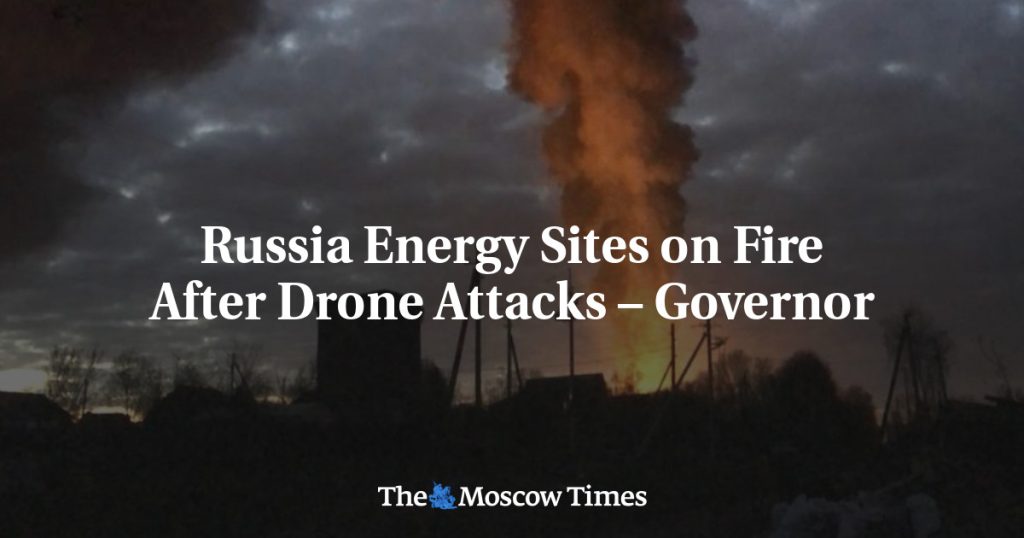The western Smolensk region of Russia experienced a series of attacks on energy infrastructure sites by Ukrainian drones, causing fires to break out. Governor Vasily Anokhin reported that no one was injured in the attacks, but the civilian energy sites were damaged. Similarly, the neighboring Lipetsk region was also targeted by Ukrainian drones, with Governor Igor Artamonov stating that the attacks were aimed at the region’s industrial zone. No casualties were reported in Lipetsk, and residential areas were not hit.
The incidents in the Smolensk and Lipetsk regions highlight the ongoing conflict between Russia and Ukraine, with the use of drones as a tactic in the warfare. The attacks on civilian infrastructure sites raise concerns about the impact on the local populations and the potential for escalation of the conflict. The fact that residential neighborhoods were not targeted in the attacks indicates a strategic focus on disrupting industrial operations rather than causing harm to civilians.
Governor Anokhin’s statement on Telegram regarding the attacks in the Smolensk region reflects the tension and vulnerability felt by the local population in the face of the ongoing conflict. The use of social media platforms to communicate updates on the situation underscores the importance of maintaining transparency and public awareness during times of crisis. The lack of casualties in the attacks is a relief, but the damage to the energy infrastructure sites poses challenges for the region’s ability to provide essential services.
Governor Artamonov’s report of the drone attacks in the Lipetsk region sheds light on the broader impact of the conflict on different industries and sectors of the economy. The targeting of metallurgical and pharmaceutical sites indicates a strategic effort to disrupt key sectors of the Russian economy through unconventional warfare tactics. The resilience of the region in overcoming these challenges and ensuring minimal damage to critical infrastructure is a testament to the preparedness and response efforts of local authorities.
The use of drones in the conflict between Russia and Ukraine represents a shift in modern warfare tactics, with unmanned aerial vehicles being employed to target strategic locations. The ability of drones to carry out precision strikes on energy infrastructure sites demonstrates the evolving nature of warfare and the challenges faced by countries in defending against such attacks. The need for enhanced surveillance and defense measures to protect critical infrastructure from drone attacks is a growing concern for governments around the world.
In conclusion, the drone attacks on energy sites in the Smolensk and Lipetsk regions of Russia highlight the complexity and intensity of the ongoing conflict with Ukraine. The incidents demonstrate the vulnerabilities faced by countries in the face of modern warfare tactics such as drone attacks and the importance of investing in defense and surveillance measures to protect critical infrastructure. The resilience of the local populations and the response efforts of regional authorities in mitigating the impact of the attacks reflect the determination and strength of communities in the face of adversity. The need for international cooperation and diplomatic solutions to resolve the conflict and prevent further escalation remains paramount in ensuring the safety and security of all parties involved.


